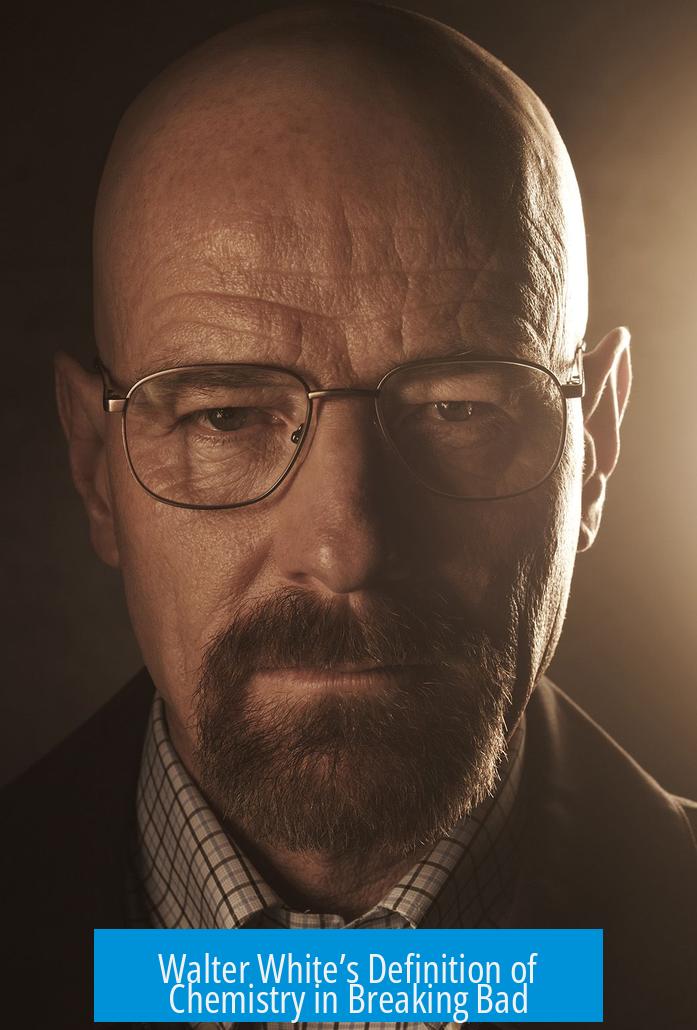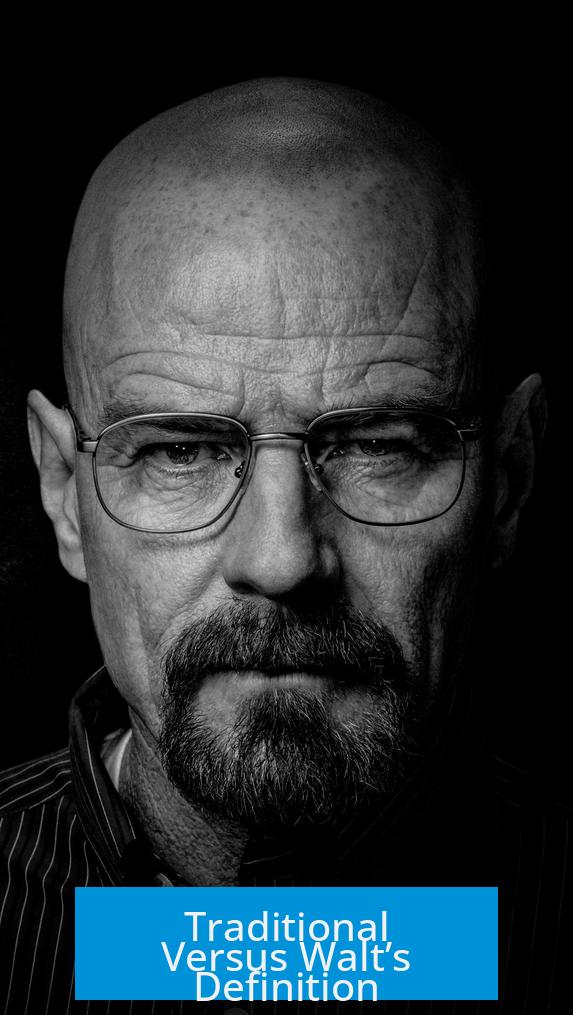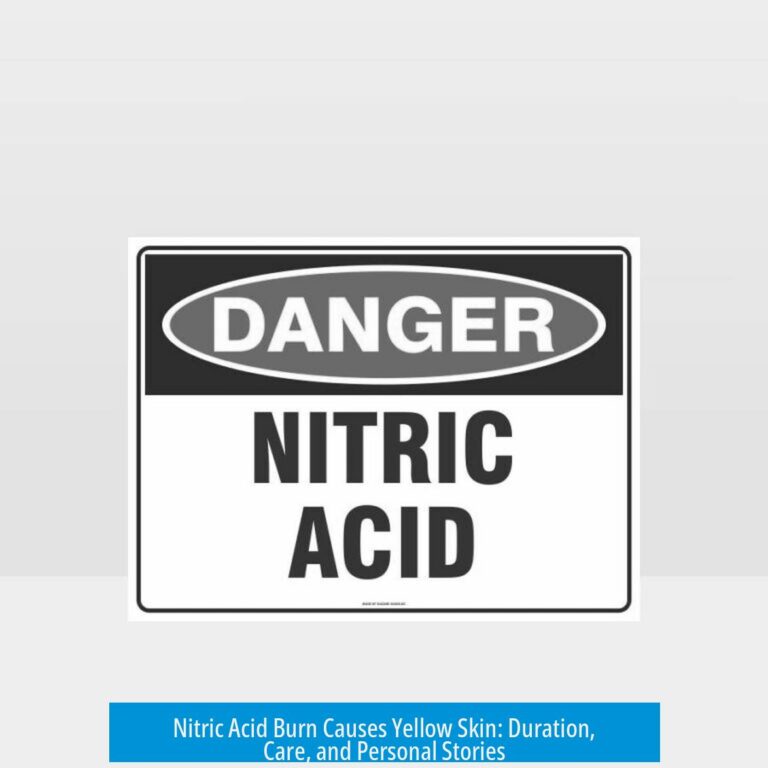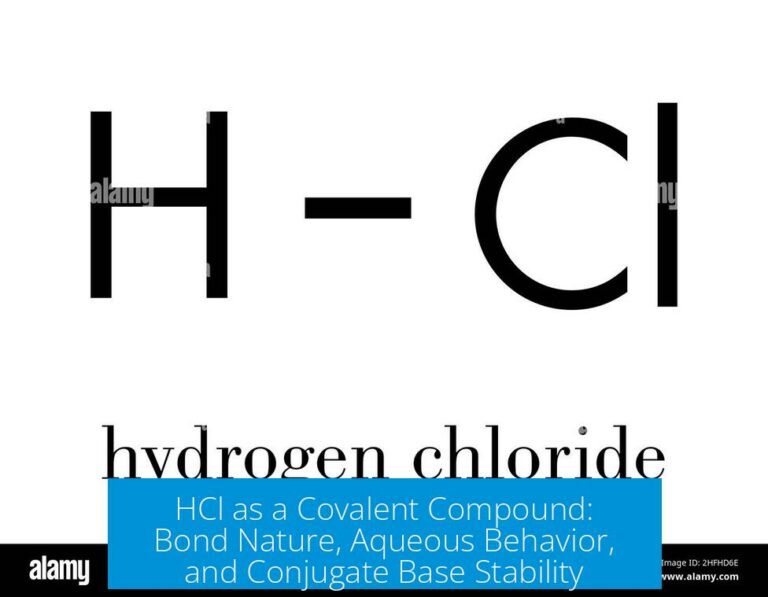Walter White’s Definition of Chemistry in Breaking Bad

Walter White defines chemistry as “the study of change,” a phrase that encapsulates both scientific principles and his personal transformation throughout the series Breaking Bad. This concise definition highlights chemistry not just as a study of matter but as a dynamic process of transformation.
Breaking Down Walter White’s Definition

Traditionally, chemistry is understood as the science of matter, its properties, structure, composition, and the changes it undergoes. Walt’s definition focuses directly on change, emphasizing transformation over static features. In Breaking Bad, this concept mirrors his evolving identity.
- Chemistry explores how substances interact, break down, and form new materials.
- “Change” involves chemical reactions and transformations on a molecular level.
- Walt’s phrase highlights the dynamic aspect of chemistry, emphasizing process rather than just composition.
Traditional Versus Walt’s Definition

Textbook definitions of chemistry often state it as the study of matter and its transformations. Walt’s version, framing chemistry solely as the “study of change,” simplifies but accurately zeroes in on the core of chemical reactions. This reflects a scientific truth but also serves as symbolic shorthand.
| Aspect | Traditional Definition | Walter White’s Definition |
|---|---|---|
| Focus | Matter and its properties | Change, transformation |
| Scope | Composition, structure, equilibrium, and reactions | Dynamic processes |
| Emphasis | Study of interaction between substances | Change as the essence of chemistry |
While Walt’s definition excludes detailed nuances, it effectively conveys chemistry’s essence in both scientific and narrative terms.

Cultural Impact and Perceptions of Walt’s Definition
Walt’s line from Breaking Bad has become iconic, shaping public perceptions of chemistry. Many viewers recall it as a straightforward yet profound summary of the subject.

However, some educators and chemists see it as oversimplified — a catchy slogan rather than a complete definition. The show’s fame leads to frequent references among students and faculty alike, although not all appreciate the simplifying effect on a complex science.
Effect on Chemistry Students and Educators
- Students connect chemistry study to Walt’s formula, sometimes missing complexities.
- Educators find the phrase useful for engagement but stress the need for fuller definitions.
- Pop culture references blur lines between scientific accuracy and entertainment.
Variation in Chemistry Definitions Across Subdisciplines
Chemistry definitions vary by specialty:
- Organic chemistry emphasizes change, studying reactions and transformations of carbon compounds.
- Inorganic chemistry focuses more on matter’s properties and structure, with change playing a secondary role.
- Physical chemistry explores electronic and energetic aspects behind chemical processes, involving both matter and change.
This variety shows that Walt’s definition, focusing on change, aligns strongly with organic and reaction-oriented chemistry but is less complete for other branches.
Chemistry as a Metaphor in Breaking Bad
Walt’s view of chemistry symbolizes his personal journey, where chemical change parallels moral and psychological transformations.
Chemistry Reflecting Walt’s Character Arc
- Chemistry lessons frame Walt’s shift from a humble teacher to a drug kingpin.
- The process of methamphetamine synthesis symbolizes his ethical decline.
- Chemical chirality serves as a metaphor for moral duality—the coexistence of good and evil within Walt.
Every chemical experiment mirrors real-life decisions, highlighting change as both scientific and existential.
Methamphetamine Synthesis as Symbolism
The chemical process of meth production in the series is exacting and meticulous. It reflects Walt’s desire for control and precision in a chaotic world. The purity and success of his product parallel his growing confidence and power in the criminal world.
This act is symbolic: transforming raw materials into a potent drug reflects his own transformation from a benign educator to a ruthless figure.
Walter White’s Moral and Intellectual Complexity
Walt’s chemistry lectures reveal much about his personality and motivations. His passion for the subject masks deeper feelings of frustration and emasculation due to lack of recognition.
Teaching Style and Personal Identity
Walt’s technical, sometimes impatient teaching style reveals pride in his knowledge and a need to assert intellectual superiority. His advanced understanding frustrates him when students struggle, reflecting his internal tension.
Connection Between Chemistry, Power, and Control
- Chemistry provides Walt with an avenue to reclaim respect.
- His knowledge becomes a tool in negotiations and intimidation.
- The mastery of chemistry feeds his ego and asserts dominance.
His scientific expertise becomes inseparable from his identity as “Heisenberg,” blurring lines between knowledge and power.
From Chemistry Teacher to Criminal Mastermind
Walt’s transformation parallels the processes he teaches. He evolves from explaining change in theory to being a catalyst of profound personal change. Chemistry becomes a metaphor and mechanism for his rise to power in the drug trade.
This journey underscores how the study of chemical reactions can analogously describe human transformation — breaking old bonds and forming new, often unexpected identities.
Key Takeaways
- Walt’s “study of change” definition captures chemistry’s dynamic nature succinctly but simplifies complex scientific concepts.
- Textbook definitions emphasize both matter and transformations, balancing structure with change.
- Subdisciplines of chemistry focus differently on matter or change, affecting definition emphasis.
- In Breaking Bad, chemistry serves as a powerful metaphor for moral and personal transformation.
- Walt’s pride and mastery of chemistry reflect his desire for control, respect, and identity.
- The series intertwines scientific and narrative meaning, using chemistry to frame a complex character arc.
How Do You Feel About Walter White’s Definition of Chemistry in Breaking Bad?
Walter White’s iconic definition of chemistry in Breaking Bad is “the study of change,” a phrase that reverberates far beyond his classroom and into the heart of the series itself. This definition is simple but packs a punch. It’s catchy, bold, and reflects not only the scientific core of chemistry but acts as a metaphor for Walter’s own transformation. But what do chemistry buffs and educators really think about this? And how does this line capture or miss the true essence of chemistry?
Let’s dive deep, shake things up a bit, and see what the fuss is all about.
The Heart of Chemistry: Walter White’s Punchline
Walter’s line on change sticks because change is chemistry’s bread and butter—but chemistry is so much richer than just that.
Context matters. In Breaking Bad, Walt’s phrase isn’t randomly tossed out. It is repeated like a mantra early in the show, signaling not just the scientific study but foreshadowing Walt’s own personal evolution. Chemistry isn’t just about mixing chemicals; it’s about transformation—physically, morally, and existentially. And who better to declare this than a character who embodies constant change?
Many viewers see Walt’s definition as a perfect, hype-worthy “sound bite.” Some even see it as the pinnacle of what chemistry means, especially in pop culture. But real chemists and educators tend to have a more nuanced take.
More Traditional Views: Chemistry as Matter and Change
Textbooks and teachers often define chemistry more broadly: the study of matter, its composition, structure, properties, and the changes it undergoes during reactions.
One respected definition echoes the idea of “study of matter and its transformations.” The emphasis here is clear—matter is king, but change reigns just as important. This distinction matters. Studying matter without acknowledging change is incomplete; studying change without understanding the matter involved is equally insufficient.
A former high school chemistry teacher confirms this: “I always defined chemistry as the study of matter and change.” That’s pretty textbook accurate. Studying matter implies interaction, and interaction implies change.
Does Chemistry Always Mean Change? Not Always…
Depends who you ask.
- In inorganic chemistry, some scientists focus on characterizing matter mostly—what substances exist, their properties, and structures, sometimes with less emphasis on transformations.
- Organic chemists often focus on reactions—how molecules change.
- Physical chemists dive into the physics of electrons and energies, often examining states of matter and transitions.
So, chemistry varies drastically across subfields. Walter’s definition is a great simplification, but the real discipline is a playground of nuance and diversity.
Walter White’s Chemistry Lessons: What Do They Reveal About the Man?
Walter’s teaching isn’t just about chemistry. His lessons peel away layers of his personality, mindset, and ambitions.
His passion for chemical precision mirrors his craving for control and respect. This isn’t some passive teacher sharing knowledge; it’s a man asserting intelligence, showcasing mastery, and seeking affirmation.
There’s a kind of meta-chemistry here—the way Walt lectures resembles his meticulous approach to the drug trade. Scientific rigor becomes a reflection of his desire to control his environment and destiny.
His chemistry talks justify his moral distortion by framing illegal acts as ‘rational experiments.’ Suddenly, meth synthesis isn’t just crime; it’s a calculated chemical reaction.
Here’s Where It Gets Personal: Chemistry as Power and Identity
For Walt, chemistry is power. His expertise elevates him from a downtrodden teacher to Heisenberg, a criminal mastermind feared across the drug world.
Think about it: the same knowledge once used to educate now becomes a toolkit for dominance. Chemistry is transformed—from a subject in school to an instrument of manipulation on the streets.
His use of mercury fulminate to intimidate rivals? Less a chemistry demo, more a statement of superiority. Watching Walt wield chemicals like weapons blurs the line between science and power.
Chirality and Duality: Science Symbolizing Moral Conflict
One of the show’s clever motifs is chirality—the concept of molecular mirror images that cannot overlap. Walt educates his students about chirality, mentioning two versions of a molecule: one harmless, one lethal.
This scientific principle perfectly parallels Walt’s moral duality. He’s both a respected family man and a ruthless drug lord—mirror images of the same person yet incompatible.
Chirality isn’t just chemistry jargon here; it’s a symbolic thread weaving through Walt’s evolving ethics and identity.
Teaching Jesse: Walt’s Influence Beyond the Lab
Walter’s role as a teacher extends far beyond facts and figures. His mentorship shapes Jesse Pinkman, his former wayward student turned partner.
Jesse adopts Walt’s focus on precision and disciplined problem-solving, though their relationship is complicated—sometimes an alliance, other times a power struggle.
Walt’s insistence on scientific rigor clashes with Jesse’s initial carelessness. But with each lesson, Jesse grows into a reflection of Walt’s influence, bearing testament to Walter’s impact as both educator and manipulator.
Chemistry as a Metaphor for Transformation in Breaking Bad
The beauty of Breaking Bad lies in its layers.
Chemistry is more than Walt’s profession—it’s the backbone of his story. The synthesis of methamphetamine symbolizes not just chemical change but personal transformation. As raw materials convert into crystal meth, Walt changes from a meek teacher into Heisenberg.
Every batch is a milestone marking his journey from order to chaos, from man to myth.
From Quiet Teacher to Criminal Mastermind
Walt’s shift from a humble educator to a powerful drug lord is striking and shows chemistry’s darker side as a tool for illicit purpose.
His lessons about “study of change” become a literal self-fulfilling prophecy: as he studies matter changing, he also changes himself, irreversibly.
The precision and control he demands in the lab reflect—and enable—his ruthless approach to crime and survival.
The Cultural Echo of Walter White’s Chemistry
Walter’s chemistry definition has become a cultural touchstone. Fans and casual viewers alike now associate chemistry primarily with “change,” thanks to Breaking Bad.
But this fame comes with a flip side.
Teachers and chemists often find it tiresome when students ask if they know how to make meth. The show’s popularity even exposes educators to awkward questions and assumptions.
Still, it also sparks interest in chemistry, drawing in people who might otherwise tune out. So, Breaking Bad’s definition serves as a gateway, albeit with risks of oversimplification.
Wrapping Up: Is Walter White’s Definition Accurate?
Yes, it’s accurate—within a certain frame.
Saying “chemistry is the study of change” captures a vital element of chemistry’s essence. It’s catchy, memorable, and resonant, especially given the series’ themes.
But it’s also a simplification. Chemistry is the study of matter, its composition, structure, properties, and the changes it undergoes. Different fields emphasize different aspects.
In Breaking Bad, the phrase brilliantly doubles as a thematic symbol of transformation, control, and moral ambiguity.
Walter White’s definition is more than a scientific statement—it’s a narrative device that captures the spirit of the show and its complex protagonist.
Final Thought
If chemistry is indeed the study of change, then Breaking Bad masterfully uses this truth to unravel a story of human change. Walt’s definition stands as a testament to chemistry’s power beyond the lab or classroom—it’s a lens to view life’s endless transformations.
So, what’s your take? Does Walter White’s “study of change” sink or swim in the ocean of chemistry? Or maybe chemistry, like Walt’s own story, is all about evolving perspectives.
What does Walter White mean by “chemistry is the study of change”?
Walter White focuses on how matter transforms. He uses “change” to highlight both scientific reactions and personal evolution. The phrase links chemistry with his own character’s transformation throughout the series.
How does Walt’s definition differ from traditional chemistry definitions?
Traditional definitions focus on matter’s properties and behavior. Walt simplifies it to “change,” emphasizing transformations over static concepts. This shift suits the show’s theme of evolving identity and moral conflict.
Why is chemistry a key metaphor in Breaking Bad?
Chemistry mirrors Walt’s personal changes. His meth production symbolizes moral shifts and increasing control. Each chemical reaction parallels steps in his descent from a teacher to a criminal mastermind.
How does chirality relate to Walt’s character development?
Chirality, meaning mirror-image molecules, represents Walt’s moral duality. It shows two sides of his nature—lawful and criminal. The scientific concept highlights his complex ethical shifts during the series.
Does Walt’s definition reflect all chemistry fields accurately?
Not exactly. Different branches of chemistry emphasize matter, change, or interactions in varying degrees. Walt’s focus on change aligns more with organic chemistry and transformation themes than some other fields.





Leave a Comment